Making the Mix Room: Michael James — Simi Valley, CA
Michael James is music. It’s at the center of absolutely everything he does.
The LA-based mix engineer has been riding high all year, thanks to a double #1 hit via his mix of the song “Estrellas Rotas” from the brilliant recording artist Kalimba’s latest record, Cena Para Desayunar (Sony Music). The record topped both the Monitor Latino’s “Plays” and “Audience Reach” charts for seven consecutive weeks in 2015.
It’s one small part of a distinguished mix discography which includes New Radicals, Hole, Far, L7, Robben Ford, Edwin McCain, Maia Sharp, A.J. Croce, Chicago, Jawbreaker, and Mario Guerrero, and many, many more.
As you’ll see in this “Making the Mix Room,” James holds nothing back. Not in his devoted striving for excellence as he works, or in how he shares his knowledge with other mixers.
And also with other artists. James is an accomplished guitarist, who has just released his new album Marchesano. So did he mix it himself, or not? Discover his complex decision below.
Along the way, you’ll learn the true importance of clean power in your rig; how his novel multi-buss submixing technique works; what it is about modern mixing that makes his ears hurt; and the one activity he depends on most of all to stay sharp.
And absolutely indispensable: his 5 can’t-miss mix tips.
There’s a lot below, and you should read every word of it. So let’s get started, shall we?
Mixer Name: Michael James
Website: michaeljamesproducer.com
Location: Simi Valley, California
Mix Philosophy: My mission is always the same for every mix: ensure that the song emotionally resonates with listeners while preserving the artists’ integrity.
How do I do this? Simply remove the distractions that interfere with the message or feel of the song. This became easier to do when I stopped trying to impress my engineer friends, and instead focused on making listeners, myself included, feel a connection to the song.
Fans buy music and support artists because a piece of music can be the soundtrack to an important time in their lives. Music is an emotional purchase, not an intellectual one. Nobody cares if I deploy parallel compression to the drum subgroup or modulation to the lead guitar echo. People only care about whether or not they like the song.
From a philosophical point of view, I guess you could say that my philosophy boils down to removing the obstacles that prevent emotional resonance, and enhancing the special parts that make the story more interesting. I listen to the reference mix before having a conversation with the artist and/or producer, and I make mental or written notes about what I can do to make the record special. Everything I do in the mix room is driven by the trust that the artist places in me to make the song resonate with listeners. After the meeting of the minds, I have a clear vision of what needs to be accomplished, and I hear the finished mix in my head before ever touching a fader or turning a knob.
I have a large collection of badass boutique recording gear, and I know how to use it. From a technical perspective, you could say that I’m a minimalist because I only add devices to the signal path when I need to do so. If a part is recorded well and speaks as it should in the mix, I won’t do anything to it other than volume automation.
Having said that, I will do whatever it takes to achieve the sound I hear in my head. If that sound requires three limiters in series on the lead vocal, I’ll do it. It’s such a great feeling when the lead vocalist is blown away by the sound of his or her voice. So many great rock singers, even John Lennon, are or were very self-conscious about their voices. A great mix can inspire renewed confidence in the singer, which ultimately makes the band even better.
Clients/Credits: New Radicals, Hole, L7, Edwin McCain, Robben Ford, Maia Sharp, A.J. Croce, Chicago, Far, Jawbreaker, Mario Guerrero, Too Much Joy, Cathedrals, The Coronas, et al.
My mix of Kalimba’s “Estrellas Rotas” was the biggest pop radio hit of the summer in Mexico, tenaciously locked at #1 on Mexico’s Pop Radio charts for seven consecutive weeks.
Mix Room Hunters: After spending more than 10 years working primarily out of the wonderful (and highly recommended!) Westlake Audio studios in Hollywood, I found myself doing less production and more mixing. I already owned all of the gear that I needed, but I didn’t have my own space.
As I was approaching 40 years of age back in 2001, I became aware of how much time I was spending commuting. The most important considerations for me in finding a room were location, fresh air and natural light. I didn’t want to spend my precious time driving anymore.
While I was working on the East Coast, my wife found a suitable place in Simi Valley, so we bought it and never looked back. It’s small, but it’s very comfortable and has a cool vibe. I love spending my time here.
Sound/Design: My room is small, with lots of acoustic treatment. I have a bunch of Ready Acoustics and Pelonis bass traps, which I placed in the corners and at the points of first reflection on the side walls and ceiling.
The treatment is ad hoc, but the room sounds good, and there are no surprises at mastering. Beyond low cut filtering at 20 Hz, and sometimes notching a half dB at 180-200 Hz, the mastering engineers with whom I work don’t EQ or compress my mixes, so I guess the room is working out okay.
The gear, however, is anything but ad hoc. I carefully chose every piece in my collection. I tend to go for modern boutique equivalents rather than genuine vintage gear because I nurture close personal relationships with the designers. They can send me a replacement item if one of my pieces breaks. Plus I actually prefer the sound of the newer reissues and clones. They are consistent, and they probably sound like the vintage pieces actually sounded fifty years ago.
When I bought my place, I planned to purchase an SSL9072J and build out a larger control room to house it. I ultimately decided to buy an empty 72RU Sterling Modular Plan B mastering console, and fill it with some of my “sweet spot”, mission-critical outboard gear. It’s about as acoustically transparent as you can get. Short cable runs, low noise floor, modular setup, smaller air conditioning requirements, etc.
My workflow? It’s described pretty well on my website, so I’ll simply copy and paste it here:
What about your workflow?
Tech geek alert!
My mix room has been described as “modern hybrid,” where classic analog and state-of-the-art digital technologies coexist. The path to this began in 2001, when I planned to purchase an SSL 9000 console (despite being a Neve guy at heart). I ultimately chose a modular approach so I could mix and match various sonic “flavors” instead of being married to one predominant sound. My unique console utilizes three Dangerous 2-Busses and a Chandler Mini Rack Mixer for analog summing. This allows me to choose between pristine mastering quality tone and thick warm Neve-ish juiciness.
The console (technically a 72-space Sterling Modular Plan B mastering console plus 3 x 20-space producer racks in ATA flight cases) contains 24 channels of Tonelux EQs plus a few Dangerous Bax and Avalon 2055 EQs to give me 32 analog channel strips — the dynamics processing is handled by 32+ channels of limiters and compressors from Manley Labs, Dangerous Music, Avalon Design, Universal Audio, Tonelux and Empirical Labs.
With 64 channels of analog I/O via four Lynx Aurora 16s, I can quickly change my signal flow configuration from 64 channels of analog summing to 32 channels of summing plus 32 channels of inserts. The latter is typically my preferred configuration because I do a fair amount of digital submixing inside Pro Tools HDX, and I don’t mind converting something twice with the Auroras.
The result is a sonic signature that has the best of Neve and API tones, with minimal wire and very low noise. Everything I need comes up on the patchbay for easy access. I even spent a few thousand bucks on voltage regulation and isolated power. There’s nothing glamorous or exciting about power conditioning, but it makes a significant sonic difference. Believe it or not, clean power reveals more detail in the mix, so I’m able to use less EQ to fit everything into the soundscape.
Even with all the groovy analog outboard gear, I do not hesitate to deploy digital time-based effects and reverbs. My go-to hardware effects are Eventide H8000FW and TC Electronic M3000 units. For software, I lean heavily on SoundToys (!) and UAD-2 emulations of classic reverbs. I write automation (lots of it!) in Pro Tools HDX with 8 or 16 touch sensitive moving faders. A single UAD-2 Octo card provides enough DSP for my FX needs.
Circling back to my console, I developed a novel multi-buss submixing technique that is in some way similar to Michael Brauer’s thing.
While every mix requires a unique approach, I typically start with a signal flow template that works in most cases. It begins with four stereo busses that feed the three 16 x 2 Dangerous 2-Bus mixers and the Chandler mixer. Bus A contains all my vocals and ancillary effects. Bus B has all the harmonic instruments that get panned out to the sides, like guitars, keys, strings, horns, and their associated FX. Bus C is for the bass, drums, parallel drum compression (if used), and their effects. Busses A, B and C go to the transparent hi-fi Dangerous boxes, whose stereo outputs each have unique EQ and compression characteristics–they each have their own (sub)mix bus processing.
All of that gets summed inside the Chandler mixer, which can either sweeten or cook the mix, depending on how hard you hit it. Bus D is for anything that doesn’t fit into the other three busses, and it goes straight into the Chandler.
Finally, I have a Dangerous Liaison on the output of the Chandler. Liaison helps me instantly audition various combinations of dynamics processors on the mixer before the music hits the final analog-to-digital converter. I don’t add any more EQ at this stage–it’s already done on the busses. The beauty of this approach is that an artist may love the balances of the mix, but want it brighter overall. No problem…unless the vocal becomes thin or sibilant! This won’t happen to me because I can brighten Busses B and C without touching Bus A, ensuring that the vocal remains warm and euphonic.
And now, back to the interview…
Choice Pieces:
DAW(s): Avid Pro Tools HDX with UAD Octo PCIe, Dangerous Convert-2, (2) Dangerous Convert-8, (4) Lynx Aurora 16, Apogee Big Ben.
Console/Control Surface: Sterling Modular Plan B filled with 24 Tonelux EQs, 64 channels Dangerous and Chandler Summing, assorted dynamics (Tonelux TXC, Manley Variable Mu and ELOP, Dangerous Comp, Empirical Labs Distressors and Derr-Essers, Avalon 2044s, etc.)
Monitors: Focal Professional SM9 and CMS40, Genelec 1031A, Auratone C5.
Outboard/Hardware/Tape: (4) 1176LN, (2) LA-3A, Avalon 2055, Avalon 2022, Chandler Germanium Mic Pre, Eventide H8000FW, TC Electronic M3000, Lexicon PCM60, YamahaD1500, etc.
Plugins: Favorites: SoundToys V5 bundle, MDW EQ, Little Labs IBP, UAD reverb emulations, Softube Tonelux Tilt, Slate Trigger 2, Avid Sound Replacer, Metric Halo Channel Strip, Toontrack Superior Drummer, Melodyne Editor, StereoMonoizer (not a plugin, but a required utility app!).
Instruments: 4 custom Tom Anderson electric guitars, Yamaha SBG2100, Gibson ES335, Lakeland USA Joe Osborn bass, Taylor 714ce, Dobro, Rhodes Mark 1, Wurlitzer 200A.
Assorted Secret Weapons: Little Labs Redeye 3D Phantom for reamping; assorted MoogerFooger and Chandler Limited pedals for effects and overdrive; Furman AR-20 and IT-20 for clean, regulated, balanced power, Dangerous Convert-2 for DA monitoring; Glyph Technologies “Studio” series hard drives for reliability and peace of mind.
Tune Up: Ken Goerres initially tweaked the room simply by moving the monitors and acoustic treatment until it sounded good. Joel DuBay of Ready Acoustics helped me figure out how to further fine-tune the room as my collection of gear grew and changed the room’s sonics. When my Focal Professional SM9s arrived a few years ago, Simon Cote and Nicolas DeBard installed them and notched 1 dB at 50 Hz using SM9’s onboard EQ.
The room sounds even better since switching to a Sterling Modular “Plan B” mastering console, outfitted for mixing. I do not add EQ across the monitors–I only move furnishings to compensate for the addition of any new, large reflective surfaces. It’s amazing how much a computer display can affect the sound of your room, simply by virtue of the way it is tilted or rotated.
For Example: My room is proof that you can mix major label hits in small private facilities. I mixed Mexico’s biggest radio hit of the summer, Kalimba’s heartfelt “Estrellas Rotas“, which was #1 for seven consecutive weeks, in my hybrid analog-digital mix room.
My novel workflow was worth its weight in gold when Kalimba and his producer, Stefano Vieni, attended the sessions because it was super easy to accommodate Kalimba’s “rockstar” vocal requests without compromising the track, and to give Stefano a modern bottom end without adversely affecting the vocals.
Dangerous Liaison was especially noteworthy because I was able to instantly A/B/C three different compressor/limiters on the lead vocal, which ultimately had a Manley ELOP and UA 1176LN in series, blended with an LA-3A in parallel. Without Liaison, it would have been difficult to remember one sound combination relative to another because patching cables is simply too slow and cumbersome to be conducive to critical listening comparisons.
For mix tips specific to this song, two important things come to mind.
First, I didn’t add any gratuitous lead vocal effects. There’s very subtle use of Eventide H8000 stereo micropitchshift to enhance side to side width, a hint of 15 ips tape slap to simulate front to rear depth, and either a chamber or plate for diffusion.
The idea was to make the vocal sound natural, not processed. I didn’t want you to hear the vocal environment, but I wanted you to feel it. I wanted Kalimba to sound like he was singing to you, not to a microphone. During the choruses, I added a long delay to a few syllables to underscore some key words.
The second important thing is the use of fader/volume automation. Stefano played several complementary (perhaps competitive) parts during the chorus, and he wanted to hear all of them.
The melodic synth line was particularly challenging because it’s a cool sound, so the ear gravitates toward it. Rather than carve out a bunch of rich lows and mids with EQ, I left the keyboards, guitars and background vocals nice and full, but I wrote a truckload of subtle volume automation to ensure that elements only poked through at precisely the right moments. The faders looked like they were dancing!
Self Examination – Michael James as the Artist:
My new album, titled Marchesano to honor my family name, was very personal in that I endeavored to make my guitar sing as if it were a human voice having conversations with one’s closest friend or most trusted confidante.
All eleven songs are instrumentals and every tune has an improvised solo, but they are not jazz. They might be described as rock songs with blues or jazz-inspired solos.
Jim Aschow, president of Mesa/Boogie, planted the seed and firmly encouraged me to record the album, so I decided to feature various Mesa amplifiers to ensure a win-win with respect to cross promotion.
My self-imposed rules were: 1) the songs must come straight from the heart; 2) the improvised solos must be soulful; 3) my guitar tones would “sing” without relying on effects such as reverb and delay; 4) the arrangements would be raw and organic, with minimal layering; and 5) there would be no gratuitous pyrotechnics or shredding.
I love the album because it sounds and feels like I made it for myself instead of someone else. People seem to like it. Robben Ford gave me a terrific meaningful quote, saying that it’s inspired and he can feel the soul in it, which makes all the difference to him. He totally got it, so I was thrilled when he said I could quote him in the marketing materials.
Even though I make my living mixing other artists’ records, I actually decided against mixing my album because, after I played my guitar parts, I felt that artistically I said everything that I wanted to say. I really wanted somebody else to mix the album, but everybody said my rough mixes sounded like masters.
Fortunately my two co-producers — David Kahne and Urban Olsson — had enough perspective to know that I was the one who should mix. I knew all the parts and I didn’t overplay. It’s very difficult to mix your own recordings because you have only your perspective and nobody else’s fresh ideas. I also had Rob Chiarelli and Matt Forger, two of the best mixers in the business, on my team. They were both ready to jump in and do some mixes, but at the end of the day, they contributed by making comments.
The biggest challenge for me was finding the time to record — and then mix — the songs. We mix engineers tend to be booked weeks or months in advance, and we are generally reluctant to pass on a good job in favor of non-paying labor of love. I averaged a day per song to record, and another day to mix. That’s three weeks net, over the course of three years.
The second biggest challenge was mixing the tunes because I felt that I needed to give them the same attention that I give to other artists’ creations. A big part of that is the fresh perspective I bring. By definition, it’s nearly impossible to have perspective when you’re immersed in your own artistic vortex.
So You Want To Be A Better Mixer: If you want to improve your mixing skills, learn as many techniques as you can, and then resist the urge to use them unless there’s a good reason to do so.
Always listen carefully to make sure that your manipulation of the song is actually improving the listening experience rather than hurting it. A great example of this is present on a couple other Kalimba tunes, “Nada Puede Herirte” and “No Volveré”–entire sections of the vocal are 100% dry, without any time based effects, to create an “up close and personal” intimate vibe that blooms into lush ambience during the choruses.
Kalimba was nervous because he felt naked without reverb. Rather than fight him, I added reverb, and then he said, “Take it off! I feel the emotion more without it.” Everybody know that you’re supposed to add effects, right? Well, it ain’t necessarily so. Let the music lead you down the right unique path for each unique song!
Q: Why do I share my techniques rather than keep them closely guarded secrets?
A: Because I want to listen to great-sounding records. Many new records sound strident — they hurt my ears when I turn them up loud. By sharing what I’ve learned, all boats might float higher with the rising tide.
Plus, teaching is a great way to learn and to meet new people. The more I serve others, the more abundant and fulfilling my life is. It’s a recurring and proven pattern in my life.
To this end, my blog is a great place to pick up some techniques and, more importantly, learn about what a producer/mixer’s daily life really looks like. There’s no posturing–it’s all real stuff.
For now, here are a few general, but powerful, mix tips:
1) Create hardware and software templates to be efficient with your time and energy. Focus on making music, not on patching cables.
2) EQ as little as possible. Do it with purpose, and hear the final sound in your head before you twist any knobs.
3) Start with balances, not EQs!
4) Tell the story to the listener by directing their attention to focus on the right things at the right times.
5) Don’t make the track so big that there is no room for the vocals.
– Michael James, Producer/Mixer at michaeljamesproducer.com
But wait, there’s more! Next month, Michael James will return to SonicScoop with a complete breakdown of his rig, hardware and software. See what he’s using, and why – all of which should give you a few ideas of your own.
Please note: When you buy products through links on this page, we may earn an affiliate commission.







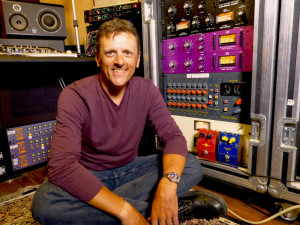
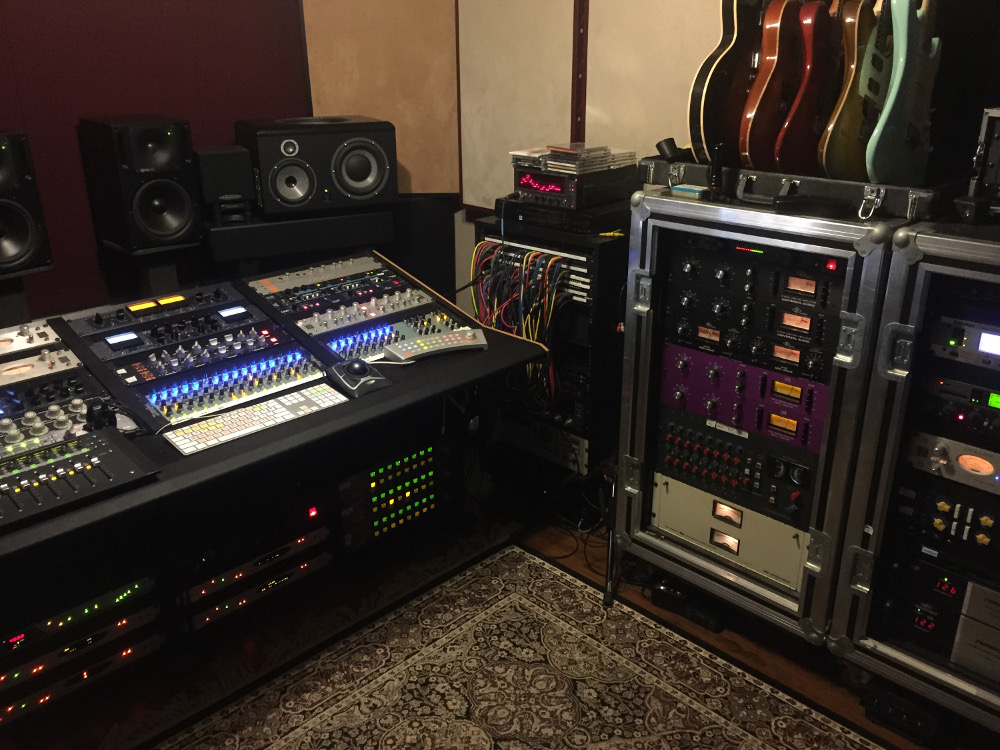
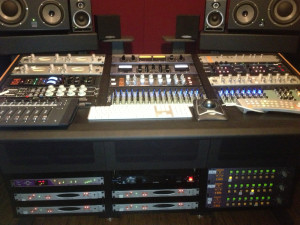
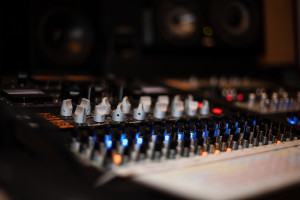
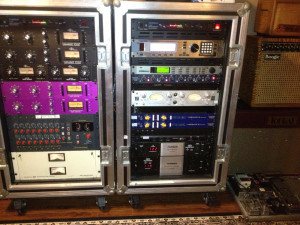
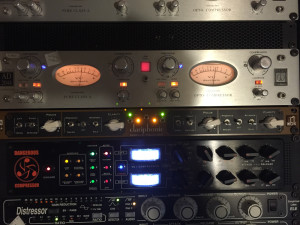
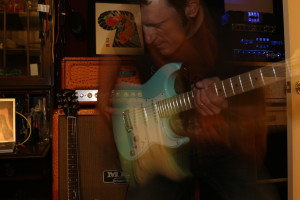
Kamilo Kratc
September 21, 2015 at 10:40 am (9 years ago)Nice!